Richard Siddle reports back from his recent trip to South Africa and Wines of South Africa’s international trade fair, Cape Wine, where he had the chance to travel right through the country’s main wine regions, from the big bulk areas in the north to the premium wine producing areas in the Western Cape.
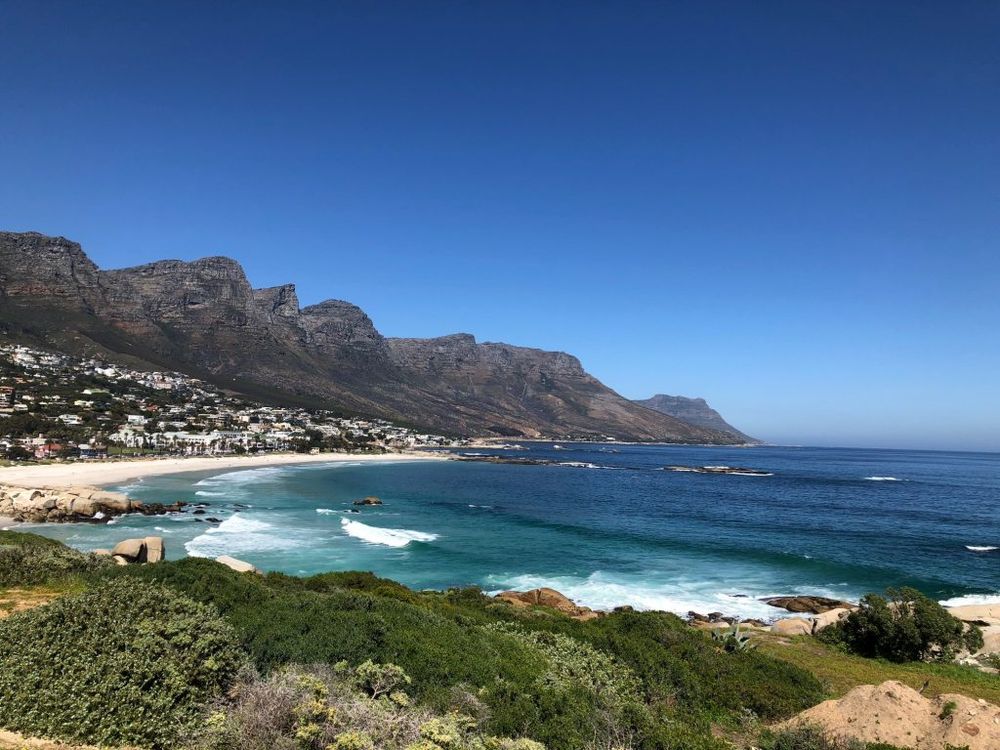
With scenery like this it’s not surprising the world’s wine buyers want to visit South Africa
For a country that keeps on telling you it is struggling to find its own identity, South Africa doesn’t have some pulling power. Where else in the world attempts to get the planet’s most important buyers to travel from all corners of the earth to attend a three day trade show where they can only taste one country’s wines?
Yes, we might all jump on planes and cross timezones to go to ProWein and Vinexpo, but there we get the chance to taste every country’s wines in one place. Yet every three years the world’s biggest buyers are making the effort to attend Cape Wine and discover what the fuss about South African wine is all about for themselves.
This year saw an even wider mix of nations attend another pivotal show for what is still effectively an emerging wine country that has only been selling wine on the international stage since the mid-1990s.
But there is nothing ’emerging’ about the quality of its wines. This year’s Cape Wine was a further demonstration of what those in the know have been aware of for some time. South Africa has quality, world class wines at all price points to suit all tastes.
Better than ever
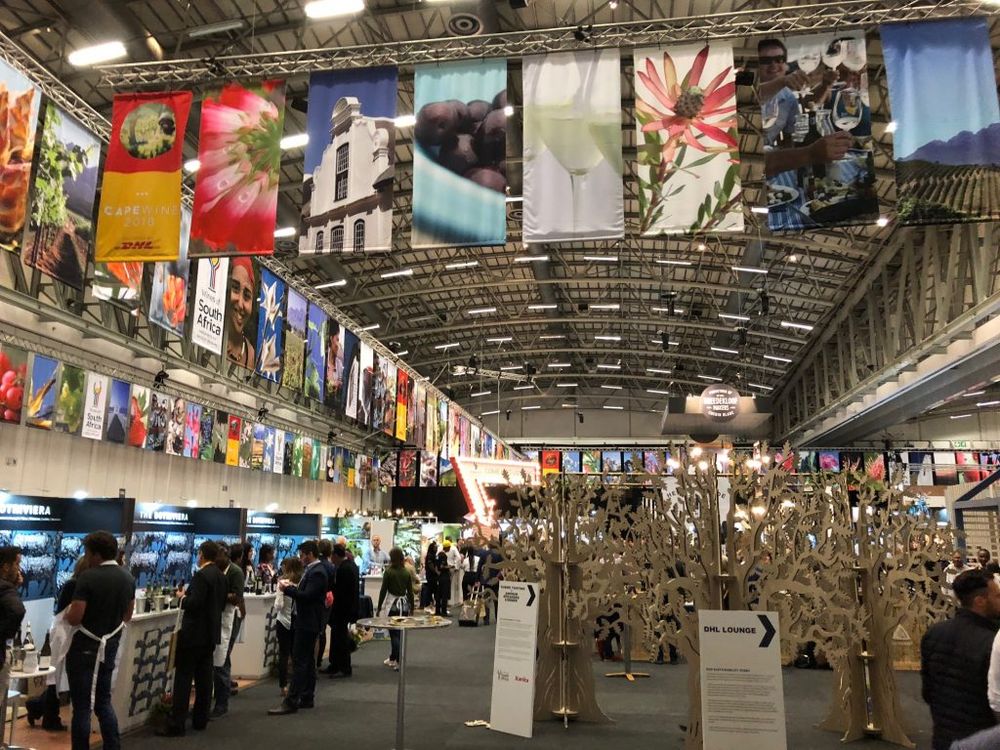
There was a record number of buyers at this year’s Cape Wine in Cape Town
This year’s show succeeded in putting South African wines on a level no-one has seen before. The quality across the board was first class. A week of tastings that culminated in what has already become a landmark event with UK wine critic Tim Atkin MW and his celebration of the near 150 wines that scored 95 points or more in his 2018 South African wine report. The fact this is his seventh annual report shows this not some overnight success story, but has been evolving, year by year, for some time now, but particularly over the last six years.
Not that you will hear many South African producers or commentators claim they have world class wines – even if they might secretly agree.
Whisper it gently, but they are not as confident as they may appear. Particularly when it comes to what international visitors might think of them and what they do.
South Africa also knows it does not operate in a bubble. It might physically be thousands upon thousands of miles from any other major wine producing country in the world, but you could feel the presence and influence of Chile, Italy, France, Spain and Australia breathing down the necks of every major international buyer walking the aisles of last month’s show in Cape Town.
The majority of South African growers, producers and winemakers might all now be very much following their own agendas and making wines that are true to their soils, terroirs and climates, but they are doing so in the context of global wine trends. After all, what happens in South America, Europe and Australasia very much dictates what buyers are looking for from South Africa. And vice versa.
A short harvest in Europe, Chile or Australia and all eyes turn to South Africa to see what volume and quality wines it is producing. Pricing in Chile or Spain, for example, will dictate what major buyers are looking for when stocking up on South African wine.
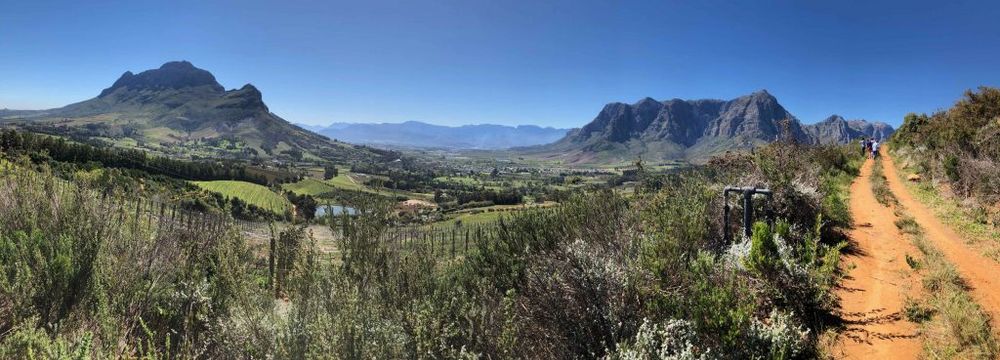
The stunning Banhoek Valley
Pricing challenge
What was also clear from this year’s show was that whilst buyers might be convinced of the step change in quality of South African wine, they are all not ready to pay the higher prices been asked for them.
Cape Wine also happened to fall in what James Reid, head of bulk wine buying for Accolade Wines, said has been the most difficult harvest in South Africa in 20 years. The bulk market was down 15% overall and 40% in some areas.
The two year drought culminated in lower yields across the board in 2018, but particularly in many of the key bulk wine growing areas that are effectively the blood supply system that the rest of the South African market relies on to make so much of its wines.
Two of the main areas, Olifants and Breedekloof were down by 30-40% and 10-15% respectively, according to Emile Gentis, South African regional manager, of VINEX, the online bulk and bottling trading exchange.
The key bulk area of McGregor, south of Robertson, saw yields down three tonnes a hectare on average, said Jacques Joordan, executive manager of McGregor Wines, the area’s main co-operative which supplies bulk wine to producers across the Cape.
Gentis likened the 2018 harvest as a “perfect storm” of factors for the industry to deal with. To understand that, he added, you have to go back to the lack of surplus wine from the 2017 harvest that has had such a major knock-on effect on trading conditions in 2018.
It meant the usual supply of generic red and white wines that fuels so much of South Africa’s cheaper domestic market was not there, which, in turn, has put greater pressure on those producers buying bulk for their own bottled wine, he explained.
The quality might have been up, but so were the prices – up by at least 20%-30% – been asked by growers to their South African suppliers and so on up the supply chain.
Frayed relations
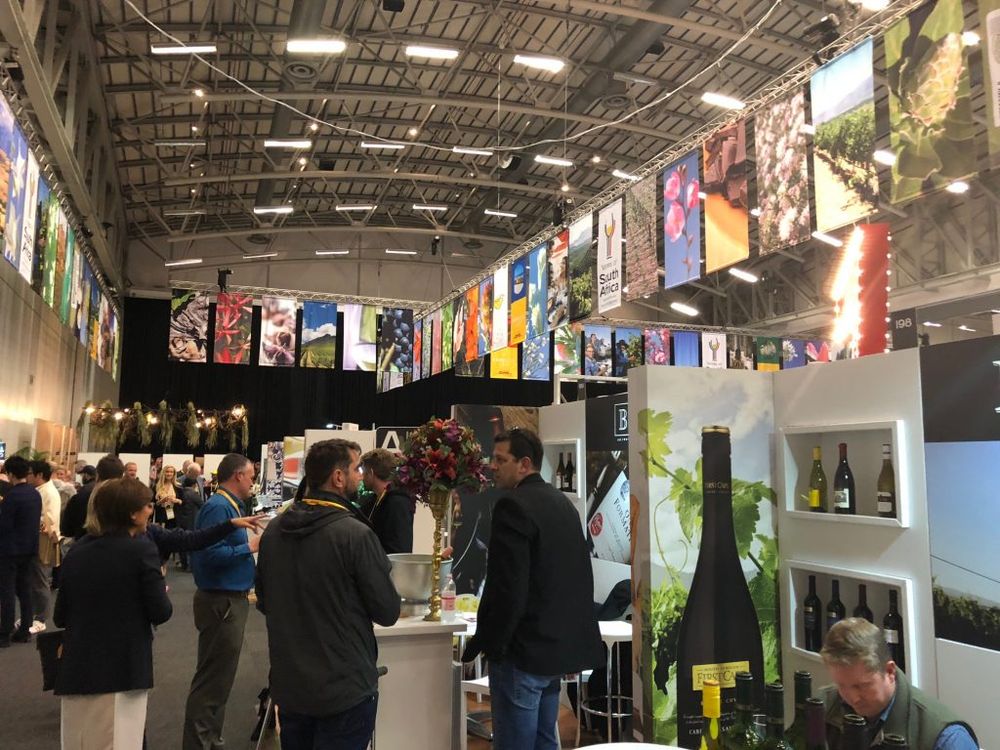
Pricing and supply challenges as well as the world class quality of the wines were the key themes of Cape Wine
But for global buyers still burnt from the shortages from most main markets in 2017 being faced with higher wine prices from South Africa in 2018 was not the commercial message they wanted to hear.
In fact most major international buyers, particularly from Europe and the UK had already been out in March and April to secure volumes early, where they could.
The pricing debate – and challenge – was very much the undercurrent of the show.
Multiple buyers thinking South Africa was still the source for their cheap, volume wine would have left frustrated. Producers looking to raise the base cost for South African wine were equally frustrated they are somehow being expected to make ethically sourced, and in some cases Fairtrade wine, for prices that simply cannot match those pricing demands.
It is certainly creating a tension in some parts of the market. A number of leading South African producers spoke off the record that they simply were not prepared to drop their prices, even by a few cents, if it meant going under what they saw as their Fairtrade or ethically produced price point and it was clear they had lost respect for the buyers, retailers and distributors that expected them to do so.
That debate has not been helped by the plummeting strength of the South African rand that made those pricing negotiations even more stretched. The market has also not been able to afford to import dry red and white wines from the likes of Spain and Argentina to ease pressures at the lower end of the supply chain, added Gentis.
So whilst on the tasting floor the talk was very much about old vines, blends and what is happening with Pinotage, Chenin Blanc, Sauvignon Blanc and the Cabernets, the meetings in the sales rooms were dictated by grape shortages, higher bulk wine prices and the pull from China that, as Reid said, is “soaking up wine like blotting paper”.
Nervous growers
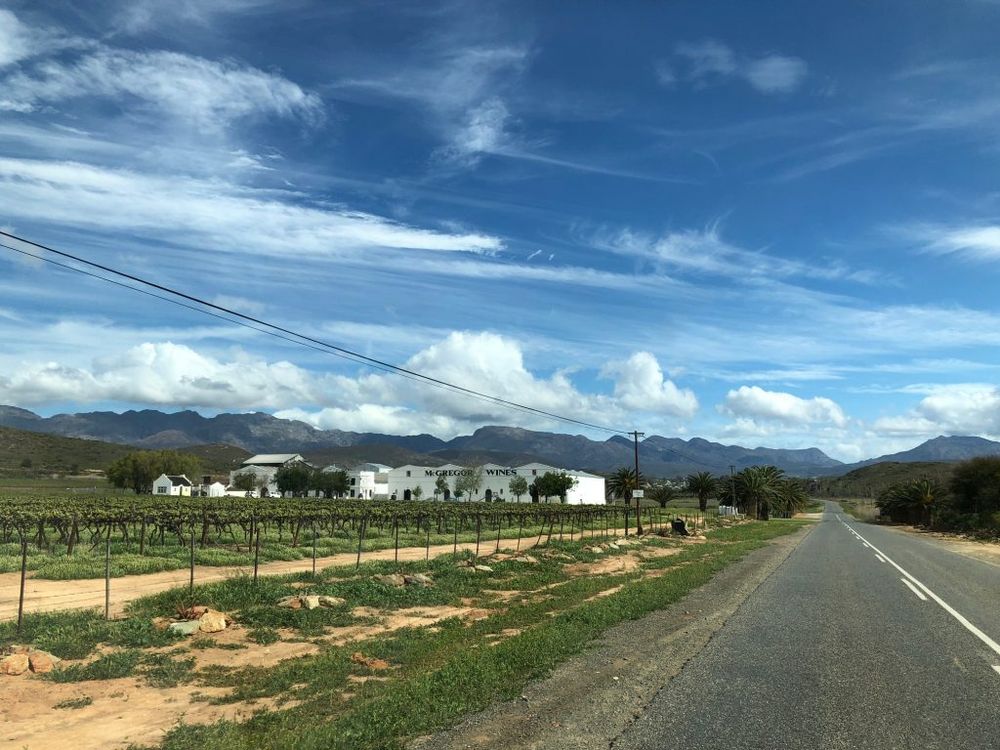
McGregor Wines in the key McGregor bulk wine area helps supply wine to producers across the country
The difficult 2018 harvest has certainly acted as a lightning bolt at the growers’ end of the South African sector. It resulted in a greater sense of anxiety in an already cautious supply chain.
With the 2018 harvest so much in question it meant pricing and volume discussions were largely put on hold until after the vintage. Joordan at McGregor Wines summed up the situation nicely: “When we have a difficult vintage we say ‘let’s see, let’s not sign’. We need to have that trust that we are walking this path together.”
But that situation was then exacerbated by some growers reneging on long term supply partnerships with their primary producer partners, and selling their grapes to the highest bidder. Major Chinese buyers, for example, caught many on the hop when they came in January to secure volumes and were willing to catch the eyes of nervous growers by paying above market rates to get the supplies they needed.
“Bridges have been burnt by some growers,” said Gentis. “Some suppliers (producers) have been really unhappy. When they went to buy their wine they found it was not there and what was there had gone up in price by 20-30%.”
Joordan says it might have been difficult year for some, but not for those that are consistent and ethical in their approach. “In the hard times it shows who you can build long term relationships with. I don’t understand those that play around.”
Planning ahead to 2019
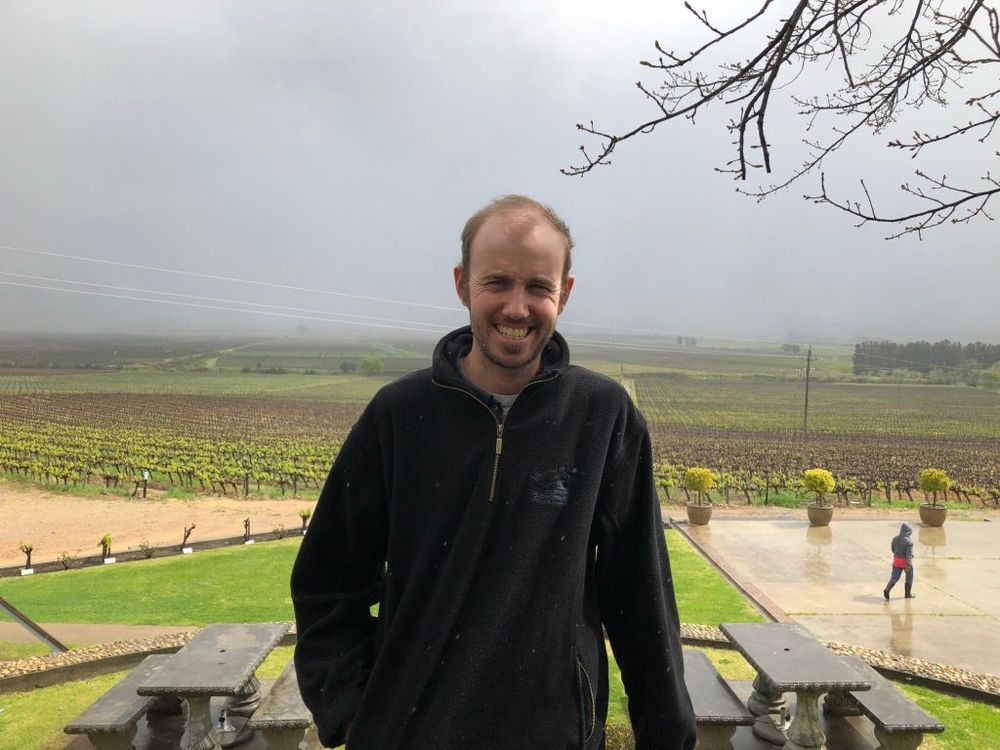
Smiling in the rain: Attie Leow says the Slanghoek Valley has already had above average rainfall
As the dust settles on Cape Wine 2018, the market is already looking ahead to how conditions might look in 2019. The good news is that dam levels are rising helped by strong September rains, and are now mostly 70% to 90% plus full and going in the right direction.
My travels around many of the bulk wine producing areas last month was done through a fog of cloud and driving rain, which might have made driving difficult, but is great news for growers and producers alike.
Attie Loew at the Opstal Estate in the Slanghoek Valley, part of the Breedekloof bulk wine region, said he had already had 1000mm of rain this year, close to his 10 year average of 1,300mm and was confident of a good market for his bulk wines – that make up 70% of his production in 2019.
There will, however, still be pressures in the market, or “residues” from 2018, warns Gentis. Producers will be looking to play a long ball game as they continue to wrestle with supply and currency issues.
Gentis expects some will be looking to fix prices in November for up to half their supply as they wait to see just how big the European harvest is and what knock-on effect it has on their own prices.
The talk from South African producers themselves is all about “securing fruit” and ensuring their long term relationships stand up to trading pressures. “That’s the big learning that has come out of 2017/2018,” said Bernard Fontannaz, managing director of Origin Wines. “You have to secure your supply for the long term.”
Local vs international
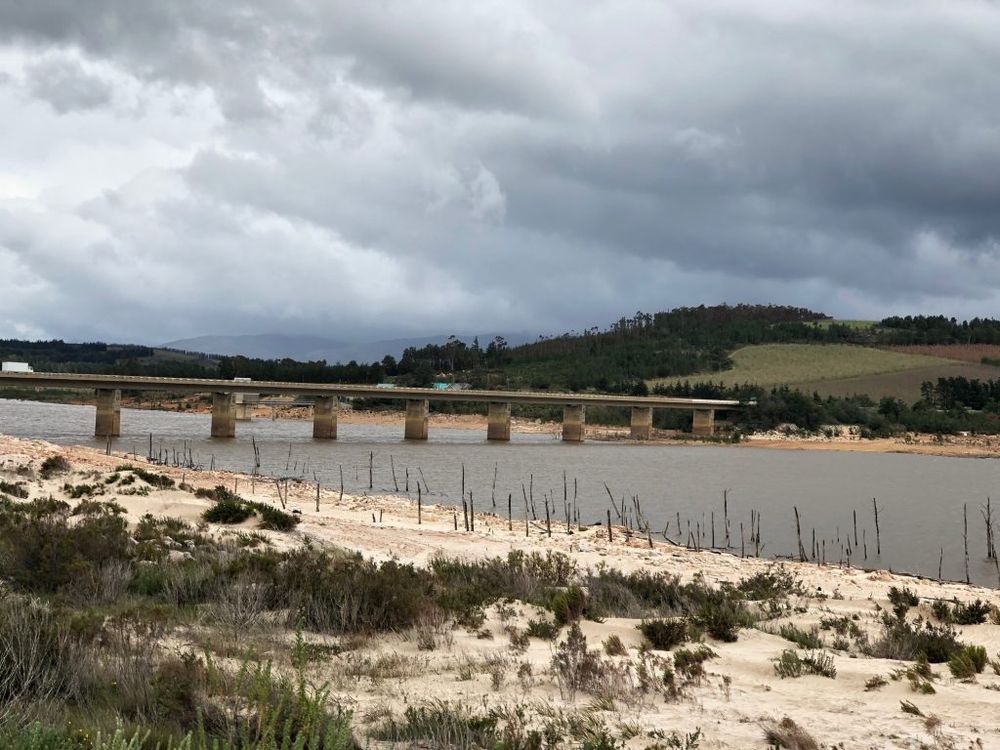
Dam levels are slowly getting back to good levels across the Cape
We can certainly expect the internal pricing debate to continue. “Growers are already saying they want higher prices on top of 2018 in 2019. But ask buyers and they think prices should be coming down by at least 10%,” explained Gentis. “Growers are not thinking about the global picture – just the local story.”
But when, according to VinPro, 37% of growers are loss making and only 14% are making more than SAR27k a year it is a challenge the South African industry needs to tackle and meet together.
The good news for the rest of the world is that the wines that they are helping to produce, at all levels and price points, offer some of the most exciting and best quality, and value wines on the planet.
With a clearly stronger, even more united wine industry behind them, the potential is clearly enormous.
That mood and sense of unity in South Africa over Cape Wine was best summed up by Opstal’s Attie Loew who said: “It’s been an amazing week. There was such great collaboration and togetherness at Cape Wine amongst all the producers that we should have played our national anthem at the end of the last day.
“We compete, we play hard and if one of us wins a contract over another then fair enough and good luck to them.”
It’s that collective effort and shared growing inner confidence that encapsulates the future of South Africa in one sentence.
- In the forthcoming weeks The Buyer will be looking at different aspects of the South African wine industry talking to growers, co-ops, the major bulk players and the top premium producers that are all collectively driving the country forward.































